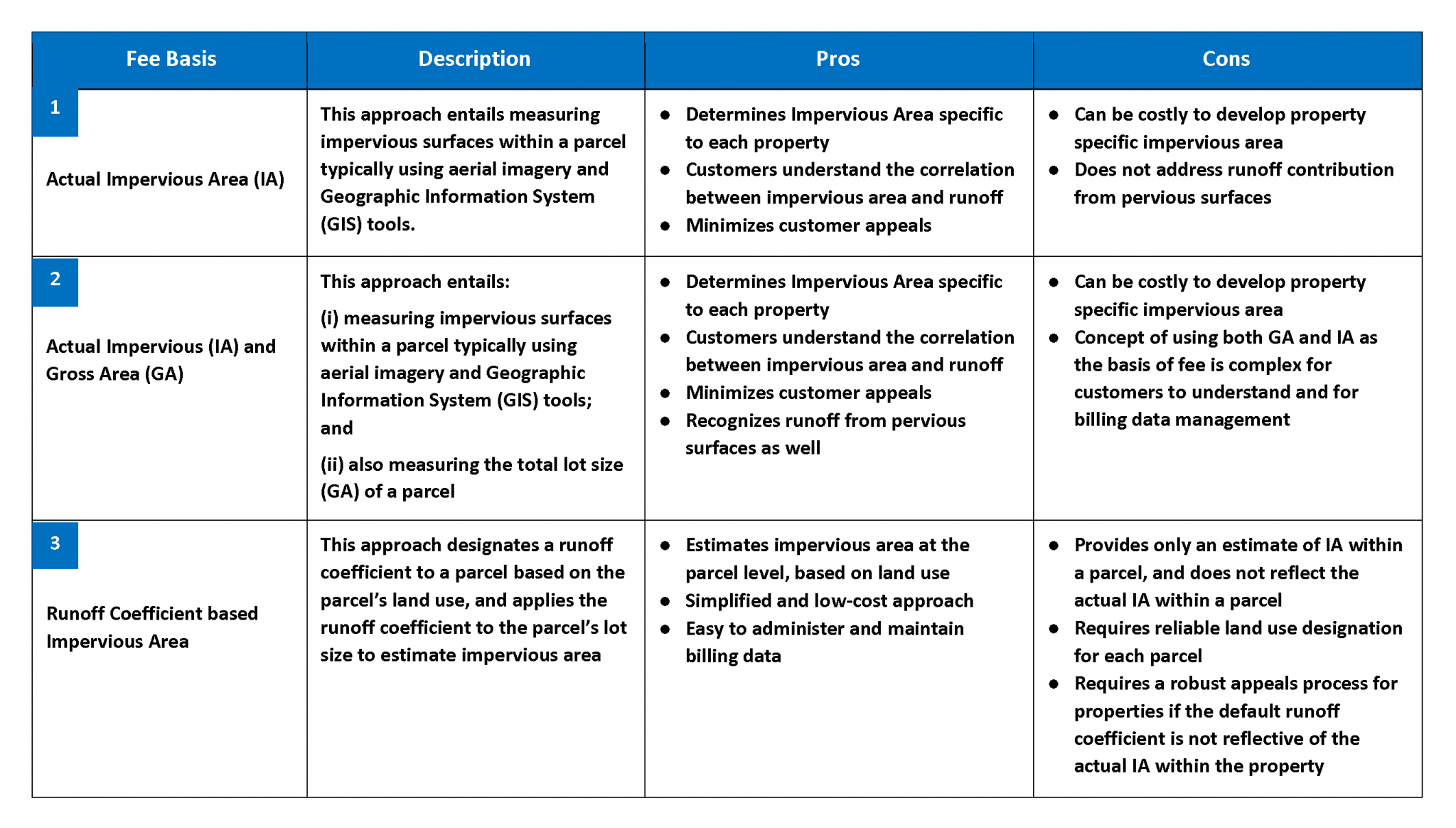Rate Structure Choices
To create a stormwater user fee, a utility needs to establish two key components – (i) a rationale and defensible basis for the stormwater billing units and (ii) a clearly defined stormwater rate structure to calculate the stormwater charge for each property. While a customer’s water usage can be measured by installing a water meter, and the water charges can then be determined based on that metered water usage, it is not feasible to measure a customer’s contribution of stormwater runoff using any metered approach. Hence, an alternative approach is used to approximate a property’s stormwater runoff contribution.
Stormwater runoff contribution fairly correlates with property characteristics, and measurements of these characteristics have been used to approximate the demand placed on stormwater services and systems. In stormwater utilities, impervious area is the most commonly used basis for stormwater fees. In fact, in Black and Veatch’s 2018 Stormwater Utility Survey, 92% of respondents indicated they used impervious area as the basis for their fees.
User Fee Methods for Developing Stormwater Billing Units
Examples of approaches used to develop stormwater billing units are outlined in the table below. Approaches 1 and 3 are more commonly used to develop impervious area for billing stormwater user fees.

Prior to selecting an approach to develop stormwater billing data, communities should evaluate available sources of parcel attributes and imagery data, carefully considering such factors as completeness, quality, reliability, and consistency. In defining the “best-fit” approach to developing impervious area, utilities must not only estimate the upfront investment costs, but also consider the recurring annual data management efforts, customer appeals administration, and associated costs.
While not as dynamic as water usage, property characteristics do change over time due to development and redevelopment activities. Without updates, the billing units may no longer reflect current property improvement conditions, which will likely impact the accuracy of charges.
Rate Structure
Once a community decides the ‘best-fit’ approach to estimating impervious area and the billing units, then utilities must also decide how to recover the annual stormwater costs from various customer classes. Key considerations include equity of cost recovery among classes, ease of customer understanding, administrative ease, and defensible structure.
Rate structure typically reflects customer categories such as the single-family residential and non-residential categories. The establishment of customer categories allows utilities to recognize similarities between properties while treating all properties in a proportional manner. Customer classes are typically defined based upon tax assessment and/or land use designations within the local community.
Residential Rate Structure
This class usually represents all single-family residential properties, and usually excludes apartment and high-density multi-family properties. The rate structure for this class can be designed as a uniform monthly flat charge, a three or four-tiered charge based on impervious area tiers, or an individually calculated charge based on the single-family residential property’s specific impervious area. Based on Black & Veatch’s 2018 Stormwater Utility Survey, of those utilities using tiered rate structures for residential properties, 37% use 4 tiers and 29% use 3.
Non-Residential Rate Structure
The rate structure for this class is most often designed as an individually calculated charge based on the property’s specific impervious area.
